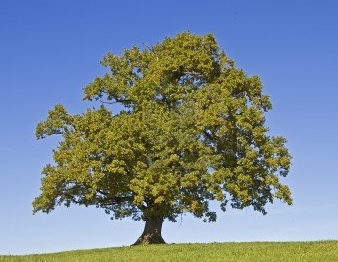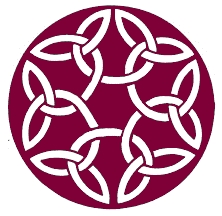The Druids - The Intelligentsia of the Celtic World

In most people’s minds the image of a Druid, if they have an image at all, is a vague notion of Merlin the Magician, or a shadowy sinister practitioner of human sacrifice, perhaps an oddly dressed New Age Hippy. But that image is far from the truth and the real story of the Druids is so much more than that.
You may ask yourself why you should care. What does it matter? It matters because the Druids were the caretakers of Celtic culture. They suffered at the hands of the Romans who were rightly intimidated by the depth of the knowledge and wisdom passed down from generation to generation in the Oral tradition of Druidic teaching. Later the conversion of the Celtic peoples to Christianity lead to the gradual erosion of the remaining vestiges of the Druidical order. The histories show that the Christian missionaries were adept at synthesising Druidical beliefs and practices with those of the Christian religion. These new beliefs were made to seem like extensions of the existing Celtic beliefs and practices rather than what they really were - a completely novel and foreign religion.
Druids were the repository of the immensity of Celtic culture, the culture that held sway over most of Western Europe before the Romans. Had it not been for the Celtic religious ban on committing the wisdom and learning of the Druids to the written word, it would be the legacy of the Celts, rather than that of Greeks, that would be hailed today as the basis of western civilization. The Druids deserve to have their story told and those of us who believe in a Celtic identity owe it to their memory and enduring spirit to attempt an understanding of their role in our legacy whether Breton, Scot , Manx, Irish, Welsh or Cornish.
In reality the Druids were the intelligentsia of the Celtic World. The role of the Druidical Establishment was akin to today’s upper middle classes: “The Druids were the professionals of pre Christian Celtic society. They comprised all the professions – doctors, lawyers, teachers, philosophers, ambassadors and so on. While religion did come in to their orbit, they were not simply (as modern misconception has it) a bizarre sect of pagan priests” (Ellis). To further clarify the complex role of Druids in Celtic society, we have the often quoted account of Julius Caesar who had firsthand knowledge from his conquest of Gaul during which Celtic society in Gaul (modern day France) was gravely damaged and the Druidical class persecuted: “The Druids officiate at the worship of the gods, regulate public and private sacrifices, and give rulings on all religious questions. Large numbers of young men flock to them for instruction, and are held in great honor by the people. They act as judges in practically all disputes, whether between tribes or between individuals; when any crime is committed, or a murder takes place, or a dispute arises.”
It is acknowledged amongst historians that the Celtic religion forbade committing the sacred beliefs to writing, a grave loss to posterity and especially those seeking a better understanding of Celtic religious belief in general and the role of the Druids in particular. As a result what we know of the Druids is often through unfriendly third party observations. The first written accounts of the Druids come from those who were often enemies of the Celts, starting with the ancient Greeks. The early Greek descriptions of the Druids should be considered in the context that Celts were viewed as barbarians and accounts proffered were from this premise; “To the Greeks, the Celts could be objects of ridicule, of fear, of exploitation and even of aesthetic appreciation, but they were always and irreducibly barbarians” (Witt).

Concurrent with the early Greek observers, the Roman accounts began, often based on the earlier writings of the Greeks. Celtic tribes from northern Italy sacked Rome and occupied the city in 390 BC. One Roman attribute which helped them conquer the world was their capacity to hold a grudge and it took the Romans a long time to get over the trauma inflicted on the city by the Celts of Northern Italy. Justifiably identifying the Druids as the keepers of Celtic Culture around whom sedition could fester in the newly conquered provinces in Gaul and Britain, the Romans relentlessly pursued the Druids. Roman propagandists slurred the Celts, and Druids, for the next 500 years. And although in the later empire there were Celts who gained Senatorial rank and positions of immense power and responsibility, it was this negative image that has seeped into the modern day consciousness perpetrated by haughty Greeks and vengeful Romans. “It is true that we possess a few respectful Greek sources; but the bulk of the ‘classical’ observations consist of the anti-Celtic propaganda of the Roman Empire”. (Ellis)
The next round of bad press came from the Christians and it was the Christians who finally co-opted the Druidical Orders. Although there is evidence of the remnants of the pre Roman Celtic culture, and continuation of the Druidical order in the conquered Celtic lands within the Roman Empire, the last stronghold of pre Roman Celtic culture was primarily Ireland. Christian missionaries commencing with Patrick, began a slow steady process of subsuming the Druids into Christian myth and legend after the collapse of the Roman Empire and ensuing chaos. “There is a subtle shift in the treatment of the druids from the mythic literature, which allegedly describes a pre-Christian Ireland, to the overtly Christian texts, which chronicle the conversion of the Irish by Saint Patrick and other early Saints. (Green)
The modern Druidical movement, viewed askance by many Celtic Scholars and Academics, is a force in the preservation, protection and promotion of Celtic culture. From the renewed use of “Happy Beltane” greetings amongst the neo pagan communities to the simple fact that the word Druid is becoming a more common tern in the lexicon of electronic media (See Transceltic blog – Stonehenge Seeks Druidical Liaison), the “modern” Druidical movement is helping keep the memory of the Druids alive.
We recommend the following works, amongst the rich offerings on this subject matter, in pursuing a greater understanding of this fascinating and complex area of Celtic Studies:
"The Druids”, by Peter Beresford Ellis, is a serious work which affords the reader a grounding in the origins of the Druids and tracks references to Druids throughout history from the Greeks to modern times. Targeting the lay reader with an interest in Celtic history this book nonetheless takes a scholarly approach with chapters on Druidical Religion and Rituals a chapter devoted to the Wisdom of the Druids with descriptions of their role as the Teachers, Physicians, Astronomers and Keepers of Celtic Law. Ellis also devotes 30 pages to an analysis of the modern “Druidical Revival” of modern times.
"Exploring the World of The Druids”, by Miranda J. Green, is a glossy richly illustrated work that that is an easy and entertaining read. The first paragraph sums up the author’s intent in providing the reader with a firm introduction to the subject matter as she sets about to shed light on the answers to the following questions: “The term Druid means different things to different people. So what is the reality? Who were these mysterious people? When and where did they manifest themselves? And how do we know anything about them?
We at Transceltic will return to the topic of the Druids in future articles. The Druids live on in our Celtic identity and we owe it to their memory to do what we can to better understand their legacy.
Sources
- Peter Beresford Ellis – The Druids
- Constanze Maria Witt, “Barbarians on the Greek Periphery”, University of Virginia, 1997
- Edward Anwyl, “Celtic Religion in Pre-Christian Times”
- Exploring the World of the Druids - Miranda Green
- Pan-Celtic
- English
- Log in to post comments






